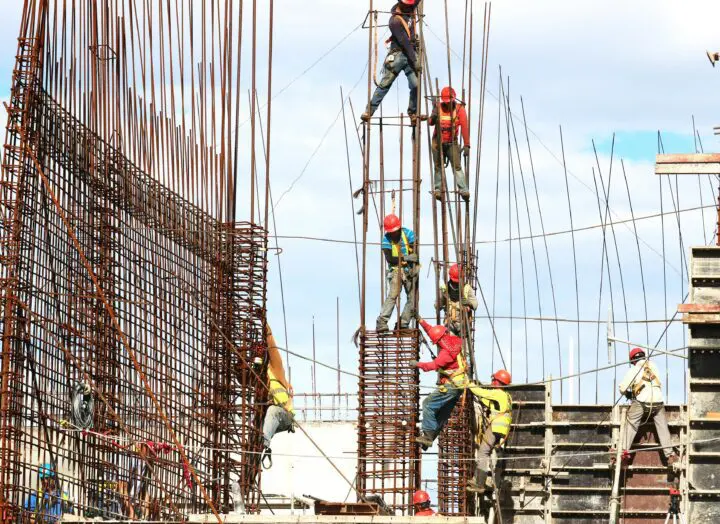New AIA contract forms reduce the architect’s risk on design‑build projects
For decades, clients have increasingly turned to the design‑build project delivery method. With the 2025 release of new design‑build documents, the AIA Contract Documents Committee has revisited the contractual obligations in the traditional design‑build format and, for the first time, created a series of progressive design‑build contracts and forms that significantly enhance the role of the design architect and protect the architect from the inherent risks associated with the traditional design‑build process.
Design‑build has diminished the role of the architect
Two decades ago, the AIA and the AIA Contract Documents Committee recognized that the growing use of design-build often limited the roles of the design firms involved in projects, relegating them to subcontractor status under the design-build entity. This diminished status created substantial professional liability exposures and commercial risks.
The AIA modified its ethical rules to permit architects to engage in the design-build project delivery system, where the architect’s client is the design-builder rather than the ultimate client, by separating the contractual obligations to the design-builder from the primary professional duty to the ultimate client. However, architects frequently found themselves assuming significant, and typically uninsured, contractual exposures in their constrained roles as subcontractors.
The proposed solution was to advocate for integrated project delivery (IPD), where a design firm holds a “co-equal” role with the contractor during project delivery. The concept was that the “team” would share in both a bonus pool of compensation if the project met negotiated criteria and in losses if the “team” were inefficient, resulting in contract forms that became available just as the Great Recession disrupted the economy. Although some clients used the IPD system for complex buildings, the IPD movement also faced challenges. Clients discovered that they could simply demand unreasonable guarantees from design-builders and proceed with traditional design-build contracts, often employing custom contracts or standard contracts from the Design-Build Institute of America for larger projects, while allowing contractors acting as the design-build entity to use the ConsensusDocs family of contracts for smaller projects.
Design‑build has mitigated the risk for clients
Design-build project delivery is appealing to clients for two primary reasons. First, there is only one point of contact, which simplifies communication, reduces the likelihood of errors, and accelerates project delivery. Second, on a design-bid-build project, while the design firm is only required to fulfill a professional duty to perform services without negligence in the design, the client—under the century-old Spearin Doctrine issued by the US Supreme Court—guarantees to the contractor that the design firm’s documents are suitable for constructing the project. Design-build relieves the client of this obligation; the responsibility for constructability lies with the design-builder.
Clients also value design-build to enhance cost management. Since the same party is accountable for both design and construction, timelines and project scopes should tend to be more precise. This facilitates better cost prediction and more effective resource allocation by minimizing cost overruns.
Whether through experience or promotion, clients also assume that design-build encourages a higher level of accountability because all parties have a vested interest in the project’s success. The integrated approach aids in problem solving and achieves better quality control throughout the process as the architect’s design team and contractor are part of the same operation.
The speed of design-build project delivery is also attractive to clients because instead of waiting for design completion before selecting a contractor, design-build projects shorten the process, providing clients with faster returns on investment.
The 2024 design‑build contracts address many limitations of design‑build
The newly released documents for a traditional design-build project delivery system include these major agreement forms:
- A141-2024, Standard Form of Agreement Between Owner and Design‐Builder for a Traditional Design-Build Project
- A441-2024, Standard Form of Agreement Between Contractor and Subcontractor for a Design-Build Project
- B141-2024, Standard Form of Agreement Between Design‐Builder and Architect for a Traditional Design-Build Project
- C141-2024, Standard Form of Agreement Between Owner and Consultant for a Design-Build Project
The new documents not only tackled the issues that render traditional design-build so risky for architects, but they also introduced the first AIA Progressive Design-Build documents, which promote a more collaborative approach. With progressive design-build, the client, design-builder, and design team work together in phases to agree on a final budget only after the construction documents are significantly complete.
Understanding progressive design‑build
The documents for progressive design-build project delivery include these agreement forms:
- A141PDB-2024, Standard Form of Agreement Between Owner and Design‐Builder for a Progressive Design-Build Project
- B141PDB-2024, Standard Form of Agreement Between Design-Builder and Architect for a Progressive Design-Build Project
Progressive design-build signifies a paradigm shift in construction project delivery—one that emphasizes collaboration, adaptability, and efficiency. By engaging stakeholders early, fostering transparent communication, and embracing shared responsibility, progressive design-build enables project teams to effectively navigate complexities and achieve superior project outcomes.
Progressive design-build can address the unique demands of modern infrastructure projects while delivering enhanced value and innovation. It is a dynamic and collaborative model designed to improve efficiency, foster innovation, and streamline project execution. And because progressive design-build uses performance-based selection rather than relying solely on cost-based bidding, its use prioritizes qualifications, experience, and proven performance. Most clients assess potential partners based on capabilities, project alignment, and past success, fostering long-term partnerships and enabling a higher level of project excellence.
Unlike traditional design-bid-build methods, where the contractor is engaged after the design is complete, progressive design-build allows for the contractor to be involved early in the design process. This collaboration aids in identifying potential challenges, optimizing designs for constructability, and providing cost estimates that reflect real-world conditions. The design process in progressive design-build is iterative, allowing for ongoing feedback and adjustments based on stakeholder input, budget considerations, and project requirements. This flexibility can lead to more innovative solutions and better alignment with client needs.
The design-build team also can engage in rational value engineering throughout the project, identifying opportunities to enhance functionality, reduce costs, and improve overall project outcomes without compromising quality. This contrasts with the application of value engineering following a project’s design, where the goal often is to reduce construction costs and construction time but with little regard for the integrity of the design and the final quality of the project.
Progressive design-build typically involves a transparent pricing model; the client is informed of costs throughout the design and construction phases. This may include a guaranteed maximum price that provides cost certainty while allowing for adjustments as the project evolves.
Traditional design-build delivery reduces flexibility in the project scope. Too often, decisions by the client to accommodate a changing purpose for the project are cost-prohibitive due to the early statement of a guaranteed maximum price. Progressive design-build allows for adjustments to the project scope as the design effort progresses to accommodate changes in client needs or project requirements. This adaptability is particularly valuable in dynamic environments—such as disruptions caused by new taxes, tariffs, or regulations—where conditions may change.
By integrating design and construction, progressive design-build can help identify and mitigate risks early in the project lifecycle. The close relationship between the design and construction teams can lead to more efficient scheduling and faster project delivery as potential delays can be identified and addressed early in the process. Additionally, the collaborative nature of the approach allows for proactive problem solving and risk sharing among team members.
Value of new design‑build documents
The newly released AIA design-build agreements and forms should significantly enhance the ability of architects to provide comprehensive services without assuming uninsurable commercial risks. The educational material on the new traditional and progressive agreement forms is available online and should be on every architect’s continuing education schedule.
More on Contracts & Risk

LegaLine
Legal ▪ Professional Practice ▪ Risk ▪ Small Firms
Building Information Modeling and the Transition to Integrated Project Delivery
Contracts ▪ Professional Liability ▪ Article
Protecting Your Firm When Going Green
Contracts ▪ Professional Liability ▪ Article